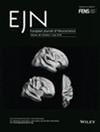Heterogeneity of Subthalamic Nucleus Neuronal Responses to Voluntary Movements in Parkinsonian Patients
Abstract
The subthalamic nucleus (STN), an important part of the motor control system, represents a prime target for deep brain stimulation (DBS) in patients with Parkinson's disease (PD). The STN is involved in several pathways regulating the preparation and execution of voluntary movements. However, the neural mechanisms providing motor control in the STN remain unclear. We analysed the single-unit activity and entire spiking activity of the STN in 21 PD patients who underwent standard-of-care DBS implantation procedures. We asked patients to perform similar motor tasks during microelectrode and EMG recording. We used perievent wavelet spectrograms and perievent histograms to analyse motor responses of rhythmic and nonrhythmic cells. We showed that responsive neurons had a more bursty firing pattern compared with nonresponsive cells and localized in the dorsolateral part of STN. Analysis of motor responses revealed an increase or decrease of firing rate of STN units, which could precede or lag the movement onset. We also found short-term phasic activation of nonrhythmic cells or beta desynchronization of rhythmic cells preceding the movement onset. Finally, we observed a transformation from bursting rhythmic activity to phasic activation before and then tonic inhibition during movement. We have shown the complexity and heterogeneity of neural responses of the STN. Our data suggests that STN is involved in both motor preparation and movement performance. These data support the hypothesis that STN could be involved in both ‘feedforward’ and ‘feedback’ processes in motor control.


 求助内容:
求助内容: 应助结果提醒方式:
应助结果提醒方式:


